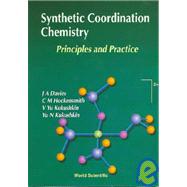| Acknowledgments | vii | (2) | |||
| Preface | ix | (2) | |||
| List of abbreviations | xi | ||||
|
1 | (34) | |||
|
1 | (2) | |||
|
3 | (1) | |||
|
4 | (2) | |||
|
6 | (4) | |||
|
10 | (1) | |||
|
11 | (2) | |||
|
13 | (1) | |||
|
13 | (1) | |||
|
13 | (1) | |||
|
14 | (6) | |||
|
20 | (6) | |||
|
26 | (5) | |||
|
31 | (4) | |||
|
35 | (23) | |||
|
36 | (3) | |||
|
39 | (10) | |||
|
49 | (3) | |||
|
52 | (2) | |||
|
54 | (4) | |||
|
58 | (37) | |||
|
62 | (7) | |||
|
69 | (7) | |||
|
69 | (4) | |||
|
73 | (1) | |||
|
74 | (2) | |||
|
76 | (2) | |||
|
78 | (1) | |||
|
79 | (1) | |||
|
80 | (1) | |||
|
81 | (5) | |||
|
86 | (9) | |||
|
95 | (62) | |||
|
95 | (2) | |||
|
97 | (2) | |||
|
99 | (2) | |||
|
101 | (2) | |||
|
103 | (1) | |||
|
104 | (38) | |||
|
142 | (15) | |||
|
157 | (26) | |||
|
157 | (8) | |||
|
165 | (2) | |||
|
167 | (2) | |||
|
169 | (3) | |||
|
172 | (3) | |||
|
175 | (2) | |||
|
177 | (6) | |||
|
183 | (12) | |||
|
183 | (5) | |||
|
188 | (5) | |||
|
193 | (2) | |||
|
195 | (27) | |||
|
195 | (5) | |||
|
200 | (4) | |||
|
204 | (8) | |||
|
204 | (1) | |||
|
205 | (4) | |||
|
209 | (1) | |||
|
210 | (2) | |||
|
212 | (1) | |||
|
213 | (3) | |||
|
216 | (6) | |||
|
222 | (70) | |||
|
222 | (8) | |||
|
230 | (3) | |||
|
233 | (6) | |||
|
239 | (2) | |||
|
241 | (5) | |||
|
246 | (14) | |||
|
246 | (6) | |||
|
252 | (5) | |||
|
257 | (1) | |||
|
258 | (2) | |||
|
260 | (10) | |||
|
270 | (3) | |||
|
273 | (3) | |||
|
276 | (16) | |||
|
292 | (47) | |||
|
292 | (4) | |||
|
296 | (5) | |||
|
301 | (6) | |||
|
307 | (5) | |||
|
312 | (2) | |||
|
314 | (10) | |||
|
324 | (5) | |||
|
329 | (10) | |||
|
339 | (29) | |||
|
340 | (5) | |||
|
345 | (2) | |||
|
347 | (7) | |||
|
354 | (3) | |||
|
357 | (5) | |||
|
362 | (6) | |||
|
368 | (24) | |||
|
368 | (4) | |||
|
372 | (5) | |||
|
377 | (2) | |||
|
379 | (4) | |||
|
383 | (1) | |||
|
384 | (1) | |||
|
385 | (2) | |||
|
387 | (5) | |||
|
392 | (29) | |||
|
392 | (4) | |||
|
396 | (3) | |||
|
399 | (3) | |||
|
402 | (2) | |||
|
404 | (2) | |||
|
406 | (1) | |||
|
407 | (3) | |||
|
410 | (1) | |||
|
411 | (1) | |||
|
412 | (3) | |||
|
415 | (6) | |||
| Conclusions | 421 | (2) | |||
| Index | 423 |








